The epichaperome is an integrated chaperome network that facilitates tumour survival
- PMID: 27706135
- PMCID: PMC5283383
- DOI: 10.1038/nature19807
The epichaperome is an integrated chaperome network that facilitates tumour survival
Abstract
Transient, multi-protein complexes are important facilitators of cellular functions. This includes the chaperome, an abundant protein family comprising chaperones, co-chaperones, adaptors, and folding enzymes-dynamic complexes of which regulate cellular homeostasis together with the protein degradation machinery. Numerous studies have addressed the role of chaperome members in isolation, yet little is known about their relationships regarding how they interact and function together in malignancy. As function is probably highly dependent on endogenous conditions found in native tumours, chaperomes have resisted investigation, mainly due to the limitations of methods needed to disrupt or engineer the cellular environment to facilitate analysis. Such limitations have led to a bottleneck in our understanding of chaperome-related disease biology and in the development of chaperome-targeted cancer treatment. Here we examined the chaperome complexes in a large set of tumour specimens. The methods used maintained the endogenous native state of tumours and we exploited this to investigate the molecular characteristics and composition of the chaperome in cancer, the molecular factors that drive chaperome networks to crosstalk in tumours, the distinguishing factors of the chaperome in tumours sensitive to pharmacologic inhibition, and the characteristics of tumours that may benefit from chaperome therapy. We find that under conditions of stress, such as malignant transformation fuelled by MYC, the chaperome becomes biochemically 'rewired' to form a network of stable, survival-facilitating, high-molecular-weight complexes. The chaperones heat shock protein 90 (HSP90) and heat shock cognate protein 70 (HSC70) are nucleating sites for these physically and functionally integrated complexes. The results indicate that these tightly integrated chaperome units, here termed the epichaperome, can function as a network to enhance cellular survival, irrespective of tissue of origin or genetic background. The epichaperome, present in over half of all cancers tested, has implications for diagnostics and also provides potential vulnerability as a target for drug intervention.
Conflict of interest statement
The authors declare competing financial interests: details are available in the online version of the paper. Readers are welcome to comment on the online version of the paper
Figures
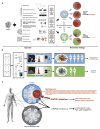
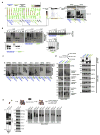
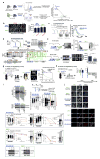
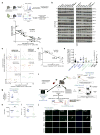
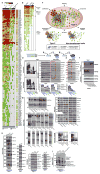
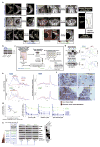
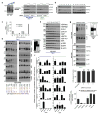

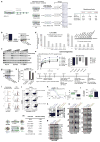
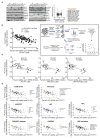




Comment in
-
Cancer: A shocking protein complex.Nature. 2016 Oct 20;538(7625):322-323. doi: 10.1038/nature19476. Epub 2016 Oct 5. Nature. 2016. PMID: 27706139 No abstract available.
References
-
- Echtenkamp FJ, Freeman BC. Expanding the cellular molecular chaperone network through the ubiquitous cochaperones. Biochim Biophys Acta. 2012;1823:668–673. - PubMed
MeSH terms
Substances
Grants and funding
- R21 AI090501/AI/NIAID NIH HHS/United States
- R01 CA103646/CA/NCI NIH HHS/United States
- P50 CA086438/CA/NCI NIH HHS/United States
- R03 MH076499/MH/NIMH NIH HHS/United States
- UL1 RR024996/RR/NCRR NIH HHS/United States
- R01 CA155226/CA/NCI NIH HHS/United States
- R21 CA158609/CA/NCI NIH HHS/United States
- P50 CA192937/CA/NCI NIH HHS/United States
- P30 CA008748/CA/NCI NIH HHS/United States
- R21 AG028811/AG/NIA NIH HHS/United States
- DP2 OD007399/OD/NIH HHS/United States
- P01 CA186866/CA/NCI NIH HHS/United States
- F32 CA192786/CA/NCI NIH HHS/United States
- UL1 TR002384/TR/NCATS NIH HHS/United States
- U01 AG032969/AG/NIA NIH HHS/United States
- R01 CA172546/CA/NCI NIH HHS/United States
- R01 CA119001/CA/NCI NIH HHS/United States
- UL1 TR000457/TR/NCATS NIH HHS/United States
- R03 NS050838/NS/NINDS NIH HHS/United States
LinkOut - more resources
Full Text Sources
Other Literature Sources
Research Materials
Miscellaneous

